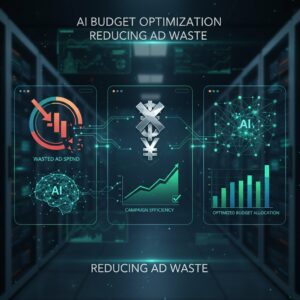
You’re tired. I see it. Maybe you’re holding down a full-time job, juggling family, and still carving out time for your side hustle. Some nights, you wonder if you’re just spinning your wheels, chasing trends that fizzle out before you even get started. I’ve been there. But here’s what changed everything for me: artificial intelligence. Not the cold, robotic kind you see in movies—but the kind that feels like a wise friend, quietly pointing out patterns and possibilities I would’ve missed on my own.
Why Finding the Right Niche Matters (And Why It’s So Hard)
Let’s be honest: picking a profitable niche is overwhelming. There’s so much noise online. One day, everyone’s talking about dropshipping. The next, it’s digital downloads or subscription boxes. If you’re like me, you’ve probably tried a few ideas that didn’t stick. That’s not failure—it’s learning. But after a while, you start to crave some clarity. You want to know: Where’s the real opportunity? Where can I actually make money and feel good about what I’m building?
That’s where AI stepped in for me. Not as a magic bullet, but as a flashlight—cutting through the fog so I could see the path ahead. Here’s how it worked, step by step.
Step 1: Getting Honest About My Strengths and Interests
Before I let AI loose on the internet, I had to get real with myself. What do I actually enjoy? What do I know better than most people? AI is powerful, but it can’t decide what matters to you. I made a list: things I love, skills I have, problems I’ve solved for myself or others. Baking. Car care. Helping friends get organized. Those small wins? They’re clues.
Here’s the vulnerable part: I wrote down the stuff I was afraid to share because it felt too ordinary. But ordinary to you might be extraordinary to someone else. AI helped me see that, but first, I had to own it myself.
Step 2: Using AI Tools to Explore Trends and Gaps
Once I had my list, I turned to AI-powered tools. There are plenty out there—some free, some paid. I started with what I had: Google Trends, Pinterest Trends, and a few keyword research tools that use AI to analyze millions of searches. I typed in my interests and watched as patterns emerged.
Here’s what surprised me: AI doesn’t just show you what’s popular. It highlights what’s growing—the niches quietly gaining traction while everyone else is distracted by the latest viral thing. For example, I noticed that searches for “eco-friendly car cleaning” were steadily rising, but there weren’t many detailed guides or products in that space. That’s a gap—a potential goldmine.
Step 3: Digging Deeper with AI-Driven Audience Insights
AI isn’t just about keywords. It’s about people. I used audience analysis tools (think: Facebook Audience Insights, Pinterest Analytics, and even AI chatbots that summarize online conversations) to see what real humans were asking for. What problems did they have? What solutions were missing?
One thing became clear: people want specifics. Not just “how to start a side hustle,” but “how to make extra income washing cars with eco-friendly products.” The more specific I got, the more engaged my audience became. AI helped me see the language people actually use—and that’s the language I started using in my content and products.
Step 4: Testing Ideas Quickly (and Letting Go of Perfectionism)
This is where vulnerability meets action. AI made it easy to test ideas fast. I’d draft a blog post or social media pin, use AI tools to suggest tweaks, and then watch the analytics roll in. Some ideas flopped. That stings. But AI gave me quick feedback, so I didn’t waste months on something that wasn’t working.
Here’s the truth: you don’t have to get it perfect. You just have to get it out there. AI is like a supportive coach, nudging you to try, learn, and try again. I celebrated every small win—one more click, one more comment, one more sale. Those add up.
Step 5: Scaling What Works (and Saying No to What Doesn’t)
Once I found a niche that clicked—thanks to AI, analytics, and a willingness to experiment—I doubled down. I created more content, launched simple products, and used AI to automate repetitive tasks (like scheduling posts or responding to common questions). That freed up my time and energy for the creative, human stuff—the stuff only I can do.
But here’s the hard part: I had to say no to ideas that weren’t working, even if I loved them. AI made it clear, in the numbers. That’s not failure. That’s focus. And it’s how you build something sustainable, not just another side project that fizzles out.
The Emotional Rollercoaster (And Why It’s Worth It)
Let’s get real. Even with AI, there are days when you’ll feel discouraged. You’ll compare yourself to others, wonder if you’re falling behind, and question whether you’re cut out for this. That’s normal. I felt it, too. But every time I wanted to quit, I remembered why I started: to create more opportunities, to build something of my own, to prove (mostly to myself) that I could do hard things.
AI didn’t take away the hard parts. But it made the path clearer. It gave me the data to make better decisions and the courage to keep going, even when it felt messy or uncertain. And along the way, I found a community—other side hustlers who were just as scrappy, hopeful, and determined as me.
Practical Tips: How You Can Use AI to Find Your Own Profitable Niche
- Start with your story. What have you overcome? What do people ask you for help with?
- Use AI tools to explore trends. Google Trends, Pinterest Trends, and keyword research tools are your friends.
- Go deeper with audience insights. Look at what people are actually searching for and talking about online.
- Test your ideas fast. Use AI to create content, run ads, or launch simple products. Watch the data, not just your gut.
- Double down on what works. When you see traction, invest more time and energy there. Let go of what isn’t working.
- Automate what you can. Use AI to handle repetitive tasks so you can focus on the creative work.
- Remember: You’re not alone. Every side hustler feels uncertain sometimes. That’s part of the process.
Real-Life Example: The Car Care Niche
Let me share a concrete example. I’ve always loved keeping my car clean, but it never occurred to me that this could be a business. One day, I plugged “car care” into an AI keyword tool and noticed a spike in “eco-friendly car cleaning.” I wrote a blog post, created a simple guide, and shared it on Pinterest. The response? Way bigger than I expected. People wanted tips, product recommendations, even local service suggestions.
AI helped me see a need I wouldn’t have spotted on my own. It wasn’t just about cleaning cars—it was about doing it in a way that aligned with growing environmental concerns. That’s when I realized: the best niches aren’t always the flashiest. Sometimes, they’re hiding in plain sight, waiting for you to notice.
Overcoming Fear and Taking the First Step
If you’re reading this and feeling overwhelmed, I want you to know: you don’t have to do this perfectly. Start small. Use AI as a guide, not a judge. Celebrate your progress, even if it’s just one step forward. The only way to build something meaningful is to begin—messy, imperfect, and brave.
Write down one thing you’re curious about. Plug it into a trend tool. See what comes up. That’s your first win. Then, share what you learn. Someone out there needs exactly what you have to offer.
Conclusion: The Power of AI and Human Grit
AI changed the way I approach my side hustle, but it didn’t replace the most important ingredient: human grit. You bring the vision, the heart, the willingness to try. AI brings the data, the patterns, the gentle nudge to keep going. Together, you can build something real—something profitable, yes, but also meaningful.
If you’re tired, if you’re doubting, if you’re wondering if it’s worth it—take one deep breath. That’s your first win. Then, take one small action. The rest will follow. You are enough. Your ideas are enough. And with a little help from AI, you can find your own profitable niche, one small step at a time.
To your success,
Please check our Business Tips
Please check our partner site – Why Invest?





